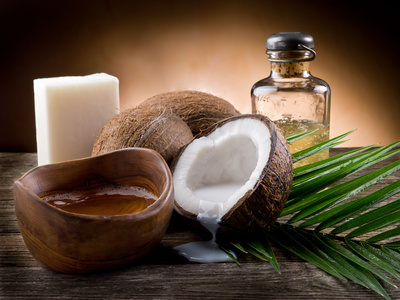
Does your dog get hot spots and you can’t figure out why?
The constant licking is frustrating to watch and to see your dog so uncomfortable and not knowing what to do feels awful for you and for your dog.
Many vets will prescribe antibiotics which may be a temporary band-aide, possibly some other type of ointment until your dog becomes resistant to the antibiotics. As well, it’s not addressing healing from the inside out which is how hot spots in dogs truly need to be treated.
You and your dog will be happy to know there is a solution that is amazingly affordable, a natural remedy and goes after some other major issues your dog could have going on at the same time.
It’s coconut oil.
Why Coconut Oil for Hot Spots in Dogs?
The technical reason behind coconut oil for your dog (don’t worry there will be an easy to understand explanation below this!):
Coconut oil consists of more than 90% saturated fats, with traces of few unsaturated fatty acids, such as monounsaturated fatty acids and polyunsaturated fatty acids. Most of the saturated fats in coconut oil are Medium Chain Triglycerides (MCTs). The main component (more than 40%) of MCTs is lauric acid, followed by capric acid, caprylic acid, myristic acid and palmitic. Coconut oil also contains about 2% linoleic acid (polyunsaturated fatty acids) and about 6% oleic acid (monounsaturated fatty acids).
Most of the coconut oil benefits come from the MCTs. Lauric acid in strong>coconut oil has antibacterial, antiviral, and anti-fungal properties. Capric and caprylic acid have similar properties and are best known for their anti-fungal effects.
In addition, MCTs are efficiently metabolized to provide an immediate source of fuel and energy, enhancing athletic performance and aiding weight loss. In dogs, the MCTs in coconut oil balance the thyroid, helping overweight dogs lose weight and helping sedentary dogs feel energetic. strong>It also is huge in healing skin issues.
Healing Dog Hot Spots with Coconut Oil

Use coconut oil internally and externally. When starting your dog on coconut oil start with 1/2 to 1 teaspoon a day and increase to 2-4 teaspoons over weeks depending on dog size.
Benefits include:
- Clears up skin conditions such as eczema, flea allergies, contact dermatitis, and itchy skin
Powerful antibacterial, antiviral, and anti-fungal agents that prevent infection and disease
- Reduces allergic reactions and improves skin health
- Regulates and balance insulin and promotes normal thyroid function
- Helps prevent or control diabetes
- Helps reduce weight, increases energy
- Aids in arthritis or ligament problems
- Improves coats to sleek and glossy, and deodorizes dog odor
- Prevents and treats yeast and fungal infections, including candida
- Disinfects cuts and promotes wound healing
- Applied topically, promotes the healing of cuts, wounds, hot spots, dry skin and hair, bites and stings
Basically the long and short of it is, most hot spots are caused from the formation of yeast, usually internally. Coconut oil will kill yeast and therefore clear up the hot spots.
Other Causes of Hot Spots In Dogs
It’s becoming more and more apparent that dogs have allergies to grain. My Labrador will immediately start licking her paws if she happens to go visiting some of our other dog friends and she happens to go straight for their food bowl which has wheat based food in it. It’s a problem as I work with many dogs I see as quite common.
So how can you curb that from happening?
Feed a grain free diet.
Why Feed A Grain Free Diet To Resolve Hot Spots?
A good friend and dog training colleague posted this on Facebook:
Last week, I was talking to a customer in my store, who told me that his uncle drives a truck in the prairies, whose job it is to spray wheat crops with one of Monsanto’s herbicides, he’s required to wear full (head to toe) gear. Nothing in the fields (he sprays) lives, except the GM wheat. As a result, he won’t eat wheat, and he’s apparently not even a health conscious guy, but he still won’t eat wheat, because he knows that what he spraying it with, is highly toxic.
That was enough for me to realize I don’t really need to feed my dogs grain that comes from who knows where but most likely not the organically grown fields. As well I don’t really want to feed it to myself or anyone of my loved ones!
There are many benefits of feeding grain free but the biggest one is many dogs have grain allergies. They are naturally meat eaters! Dogs with grain allergies will often have ear infections, excessive scratching, licking of paws, and hot spots. Dogs with these issues will benefit greatly because a grain free food removes these allergens from the diet.
Did you like this article? Take it to the next level with this and Download This FREE Guide – The Secret To Get Your Dog To Behave In Any Situation.

Want to talk about your dog whether it be health, behavior, fitness or lifestyle? Schedule a free Lifestyle Dog Training strategy session here!
Like this post? Share it! (click the share below) Other dog people want to know. : )

